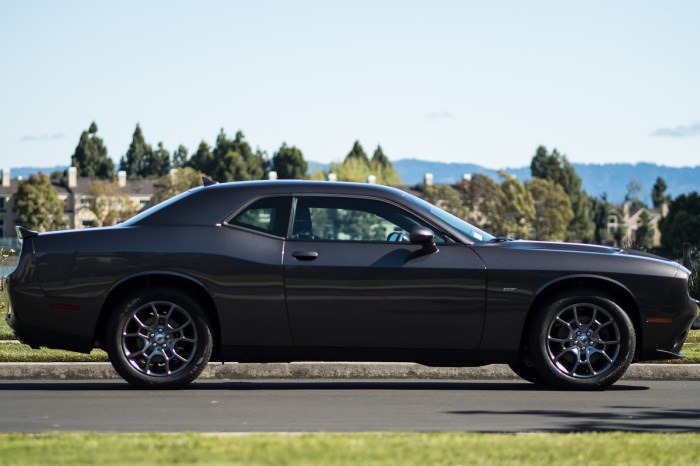AWD performance cars are at the forefront of automotive innovation, combining power and precision to deliver an unparalleled driving experience.
With roots that trace back several decades, All-Wheel Drive systems have evolved significantly, transforming how enthusiasts and everyday drivers approach performance vehicles. Key brands like Audi, Subaru, and BMW have championed this technology, setting new standards in handling and traction across various terrains, particularly in challenging weather conditions.
Overview of AWD Performance Cars
All-Wheel Drive (AWD) systems have become a hallmark of performance vehicles, providing enhanced traction and stability. AWD refers to the capability of a vehicle to distribute power to all four wheels simultaneously, which improves its handling and acceleration. Historically, AWD has evolved from its origins in off-road and rallying applications to become a standard feature in many high-performance cars today. Major brands like Audi, Subaru, and Mercedes-Benz have led the charge in implementing sophisticated AWD technologies, crafting vehicles that can tackle both the track and everyday roads with equal prowess.
Advantages of AWD Systems
AWD systems offer numerous advantages, particularly in terms of handling and traction across various terrains. The primary benefits include enhanced grip on slippery surfaces, improved cornering stability, and reduced wheel spin. In adverse weather conditions—such as rain or snow—AWD significantly enhances performance, allowing vehicles to accelerate and maneuver with confidence. When compared to two-wheel drive (2WD) and rear-wheel drive (RWD) setups, AWD systems typically outperform in metrics like acceleration and cornering speeds due to their superior weight distribution and traction capabilities.
Notable AWD Performance Models

The market is brimming with impressive AWD performance cars. Here’s a curated list of the top 10 models currently available:
- Audi RS7: 591 hp, 0-60 mph in 3.5 seconds
- Porsche 911 Carrera 4S: 443 hp, 0-60 mph in 3.4 seconds
- Subaru WRX STI: 310 hp, 0-60 mph in 4.6 seconds
- Mercedes-Benz E63 AMG: 603 hp, 0-60 mph in 3.3 seconds
- Lamborghini Urus: 641 hp, 0-60 mph in 3.2 seconds
- Nissan GT-R: 565 hp, 0-60 mph in 2.9 seconds
- Ford Focus RS: 350 hp, 0-60 mph in 4.6 seconds
- Tesla Model S: 1020 hp, 0-60 mph in 1.99 seconds
- BMW M5 Competition: 617 hp, 0-60 mph in 3.1 seconds
- Volkswagen Golf R: 315 hp, 0-60 mph in 4.5 seconds
User reviews often praise these models for their traction and driving experience, while expert opinions highlight their performance capabilities in various driving conditions.
AWD vs. Other Drive Systems, AWD performance cars

The differences between AWD, front-wheel drive (FWD), and rear-wheel drive (RWD) systems are crucial in performance settings. AWD enhances vehicle dynamics by distributing power evenly, which is essential during high-speed maneuvers. In contrast, FWD tends to provide better fuel efficiency but may lack the handling precision of AWD. RWD vehicles offer a more typical sports car experience but can struggle in low-traction situations. The drivetrain layout directly influences acceleration, cornering stability, and overall handling characteristics.
Performance Metrics of AWD Vehicles
Key performance indicators (PPI) for AWD vehicles include acceleration, cornering speeds, and braking distances. Statistics show that AWD systems consistently outperform their 2WD counterparts in acceleration metrics, particularly in wet or slippery conditions.
| Model | Horsepower | 0-60 mph | Top Speed |
|---|---|---|---|
| Audi RS7 | 591 hp | 3.5 seconds | 190 mph |
| Porsche 911 Carrera 4S | 443 hp | 3.4 seconds | 191 mph |
| Subaru WRX STI | 310 hp | 4.6 seconds | 155 mph |
| Mercedes-Benz E63 AMG | 603 hp | 3.3 seconds | 186 mph |
Maintenance and Care for AWD Systems

Routine maintenance for AWD vehicles involves checking the power distribution system, inspecting differential fluids, and ensuring that all tires are evenly worn. Common issues include uneven tire wear and malfunctioning sensors, which can hinder performance.
A step-by-step guide for troubleshooting AWD problems includes:
- Check tire pressure and tread depth.
- Inspect fluid levels in the transfer case and differentials.
- Examine the driveshaft for any signs of wear.
- Run diagnostic tests to check for error codes.
- Consult a professional mechanic for complex repairs.
Future Trends in AWD Performance Cars
Emerging technologies such as adaptive torque distribution and smart driving aids are set to revolutionize the AWD landscape. The rise of electric and hybrid vehicles also presents new opportunities for AWD systems, making them more efficient and responsive. Consumer preferences are shifting towards sustainable performance, pushing manufacturers to innovate in both performance and eco-friendliness, paving the way for the next generation of AWD performance cars.
Final Conclusion
In conclusion, the world of AWD performance cars not only showcases the technological advancements in automotive engineering but also highlights the increasing consumer demand for vehicles that offer superior control and adaptability. As the industry moves towards hybrid and electric models, the future of AWD may hold even more exciting developments, ensuring that these vehicles remain a staple in the performance car market.